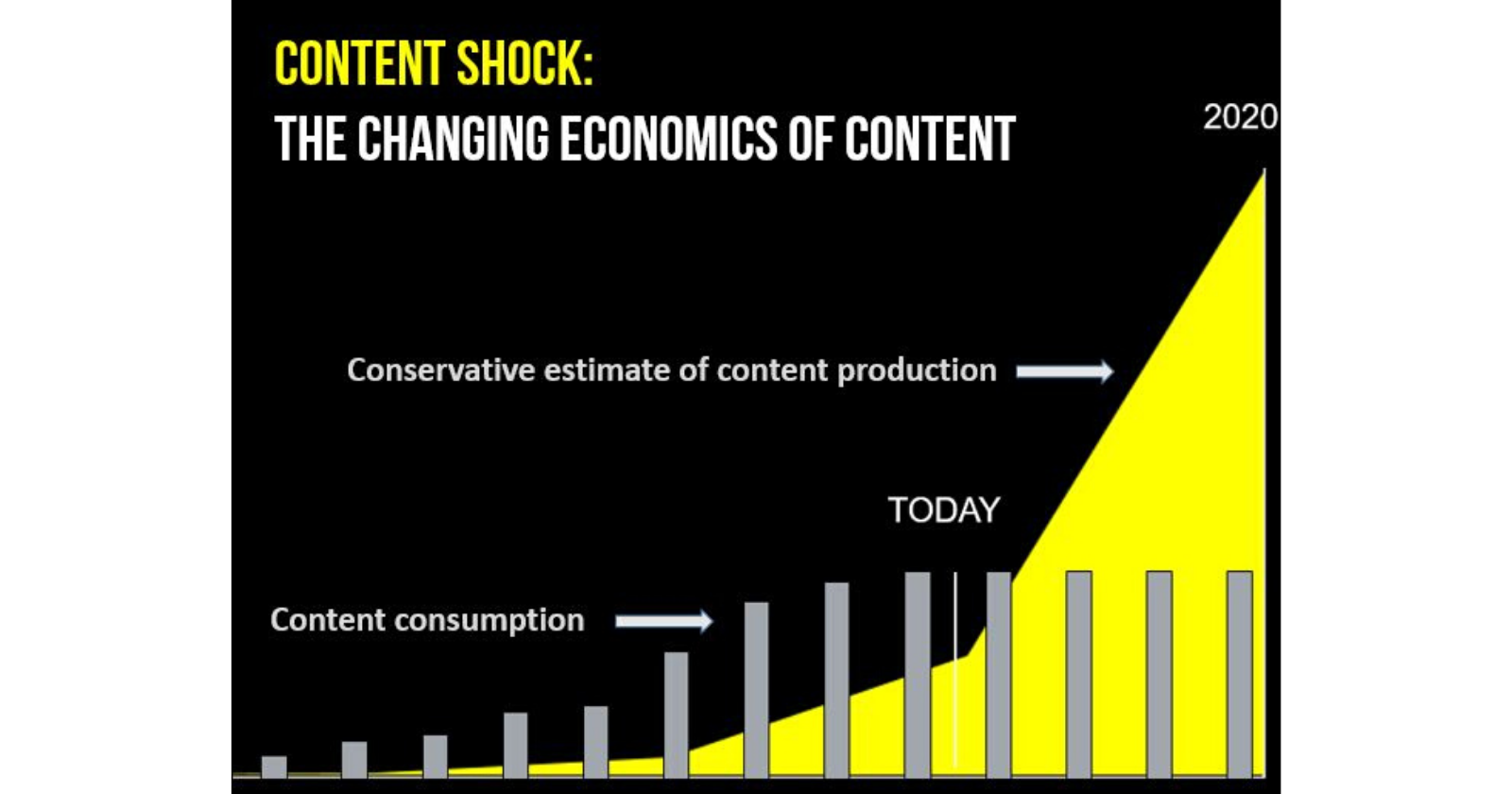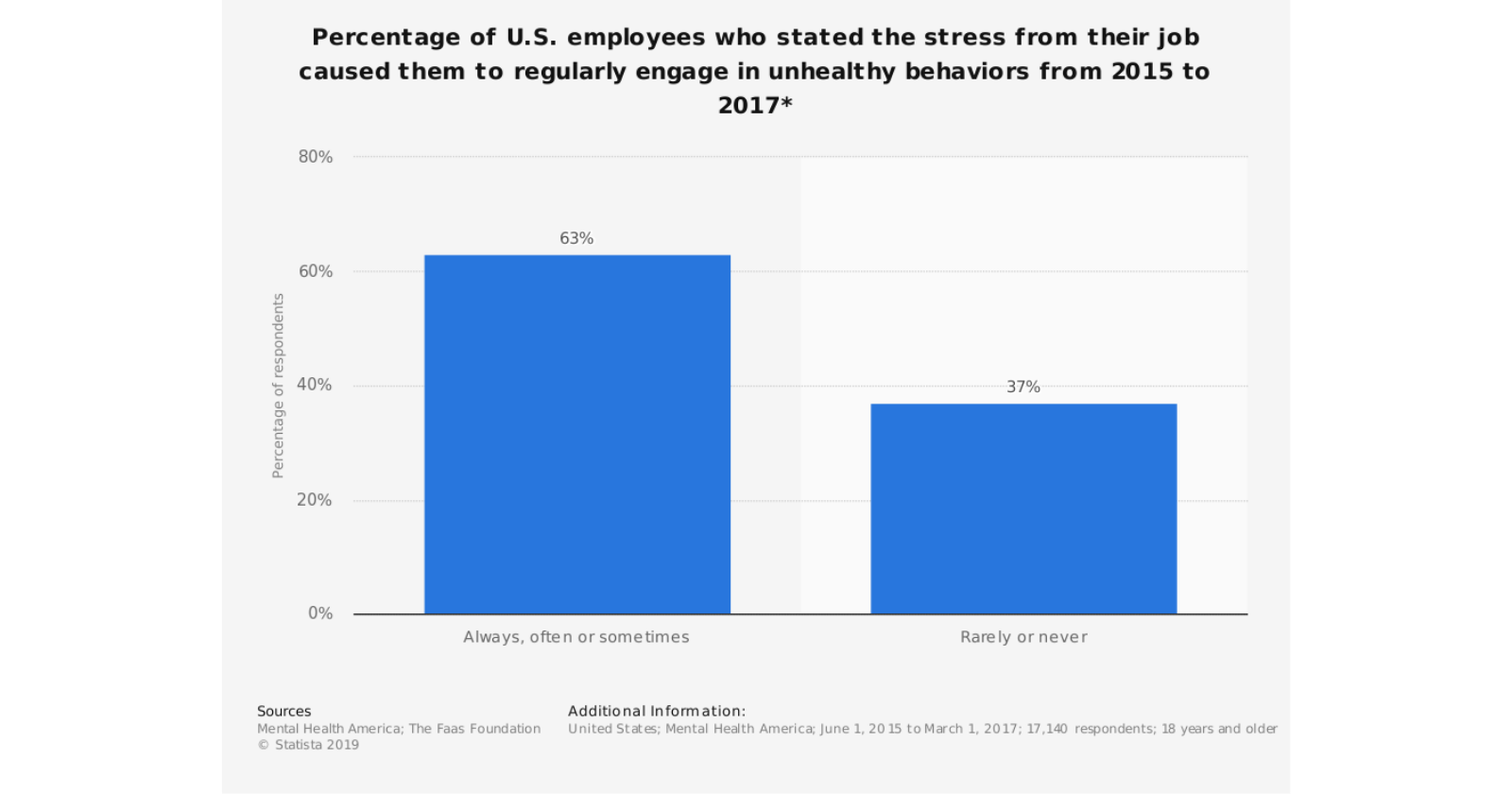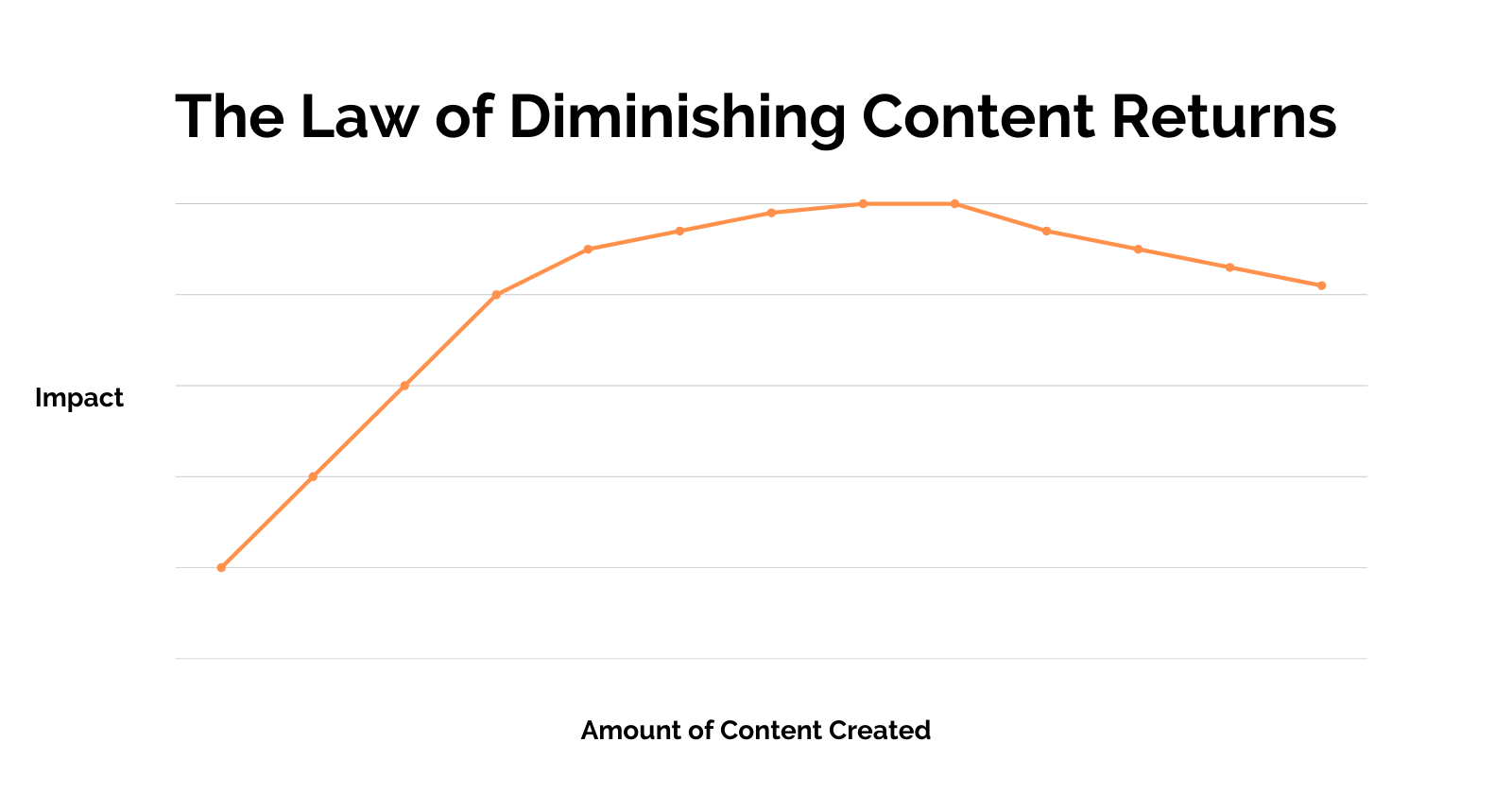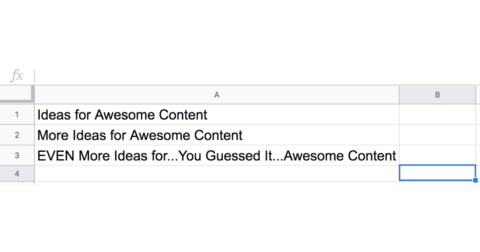Content shock.
Mark Schaefer first predicted it over five years ago, in 2014.

The marketing industry should have taken it as a warning, and some of us did.
But not enough.
Instead of pacing ourselves (and our audiences) with content, we continued to run a metaphorical race for who could publish the most content with the highest word counts.
So content shock continued to get worse, both for marketers and the audiences we create content for.
Now we’re really in the thick of it, and we need to start dealing with the consequences.
“It” being content overwhelm, and wow, is it hard to wade through.
Have you ever…
- Felt creative burnout or writer’s block?
- Experienced regular burnout?
- Started to feel repetitive with your content?
That’s all thanks to content shock, marketing overwhelm, and the “more is better” approach to content that the content marketing industry’s been taking for the past decade.
If you’ve dealt with any of the items of the list above, you might already be on board with a more sustainable approach to content strategy.
But if you’re not yet convinced that more content isn’t better, allow me to persuade you.
Here are six reasons why more content isn’t better – and might, in fact, be worse.
1. Content Marketers Aren’t Immune to the Burnout Epidemic
We’re in the midst of a reckoning with Hustle Culture, a culture of work that glorifies endless productivity, overwork, and sacrifice more than health, balance, and boundaries.
In 2019, we started to see the beginning of the end of this mindset.
First, there was the viral millennial burnout BuzzFeed article. Not that burnout is unique to millennials.
Then, later in the year, the World Health Organization officially added workplace burnout to its International Classification of Diseases.
And all throughout the year, we began to see more discussions of burnout that were frankly long-overdue.

Marketers of all kinds – from in-house, to agency-side, to self-employed – are joining the discussion.
In fact, Search Engine Journal has joined the conversation too, introducing a weekly self-care column where along with other marketers, I’ve talked about my own experience with burnout.
It’s clearly something tons of us are dealing with, so it’s past time we learn how to adapt the content marketing practices born from Hustle Culture to fit the upcoming era of balance.
2. All Strategies Have a Point of Diminishing Return
The second reason to start taking a “less is more” approach to content marketing is the economic principle of the Law of Diminishing Returns.
According to Investopedia, here’s what it means:
“The law of diminishing marginal returns states that, at some point, adding an additional factor of production results in smaller increases in output.”
So what does this mean for content marketing?
Well, that there’s a ceiling to how much impact you can make with a given content strategy, no matter how frequently you’re implementing on it by publishing new content.

There are only so many people you can reach just by increasing your amount of content without addressing other, more important aspects of your strategy, such as:
- Content quality.
- Customer journey targeting.
- Lead nurturing.
- Conversion.
At some point, you’ll have created all the content you need, and your time will be better spent marketing that content than creating more.
3. Unneeded Content Generates Bad Leads
At some point, you’ll have created “enough” content.
You will have covered all your bases. Created content about all the major touchpoints and talking points in your customer journey.
At that point, you’re faced with the choice to keep talking about the same things more, or branch out to related topics.
Most people branch out.
For example, if you’re a marketing software tool, you might start talking about sales. If you target photographers, you might start expanding to talk about video.
Sometimes it works, but often it doesn’t.
Because depending on your strategy for taking people from viewers to customers, that might end up filling your funnel with bad leads who don’t need your product or service.
So while that slightly-off-topic content might inflate traffic numbers and other top-of-funnel marketing metrics, it can dilute your brand’s value proposition, attract irrelevant audiences, and hurt the bottom-of-funnel metrics that really matter.
4. Repetitive Content Creates a Confusing Experience
In the above section, I described one way to deal with the “we’ve already covered everything important” issue. Another way is to create more content on the same topics.
But marketers rarely do that in a way that’s user-friendly.
For example, let’s look at an example from my own past mistakes. When I worked at a company that targeted content marketers, I wrote three or four different pieces about brainstorming content.
That made it hard to promote and reference these pieces to our audience without getting them confused. It was even hard to keep the pieces straight myself.

Instead, I could have continued to update, expand, and improve one piece over time with all the new information I was creating separate posts for.
5. Published Content Requires Maintenance
Evergreen content must be updated.
Yes, evergreen content can continue to bring you traffic, leads, and sales for years, but only with maintenance.
If you’re looking at content like plants, then your content library is a garden.
And with gardening, you can’t just plant seeds and let them be.
Individual pieces of content require maintenance over time in order to grow into powerful pieces of evergreen content.
That can include things like:
- Continuing to update the content with timely information.
- Re-optimizing content around different focus keywords.
- Updating your product tie-ins and calls-to-action.
- Adding new images and links.
- Re-promoting the old content so it gets seen by your new audience.
Continuing to pump out new content without maintaining what you already have is essentially a churn-and-burn strategy.
The more content you have, the more maintenance your content marketing needs, and you need time (and space in your marketing calendar) to tend to it.
6. It Frees You up to Promote What You Have
Finally, the best reason to focus on less (but better) content is that it frees you up for other areas of marketing.
Let’s be real, a marketer’s to-do list is never finished. There’s always more to do, and so much more than creating content.
By creating less content, you and the rest of your marketing team have more time and energy to focus on other parts of your marketing strategy using the content you already have.
For example, you can finally start following that rule to spend as much time promoting your content as you do creating it.
There’s more time to promote content on social media, optimize it for SEO, build backlinks, repurpose it into other formats, and everything else that keeps getting pushed to the bottom of your to-do list.
Focus on Less, but Better
There’s a popular saying in the minimalist movement and community: “more isn’t better, better is better.”
It’s an approach more of us need to embrace with our marketing.
We only have so much time to dedicate to our content marketing, let’s make sure the content we do publish is worth it instead of overwhelming our readers and ourselves while contributing to content shock.
More Resources:
- Don’t Invest in Content Unless You Can Be #1 – Here’s Why
- 9 Simple & Fast Ways to Elevate Your Content
- 17 Tips & Tricks to Improve Your Content
Image Credits
Featured Image: Unsplash
Content shock graph: Mark Schaefer
Burnout graph: Statista
All other images created by author, February 2020





